#1957 mercury
Photo

Popular Science November 1956
34 notes
·
View notes
Text

1957 Mercury Turnpike Cruiser
93 notes
·
View notes
Text

1957 Mercury advertisement
#1957#1956#Mercury#automobile#vintageadsmakemehappy#vintage magazine#vintage advertising#magazine#advertising#1950s#50s#american#land yacht#landyacht#boat
37 notes
·
View notes
Text

Mercury Mystery Book Magazine Jul 1957
Edmund Emshwiller
#golden age art#pulp magazine art#pulp art#pulp art 1957#Mercury Mystery Book Magazine#Ed Emshwiller art#byronrimbaud
45 notes
·
View notes
Text
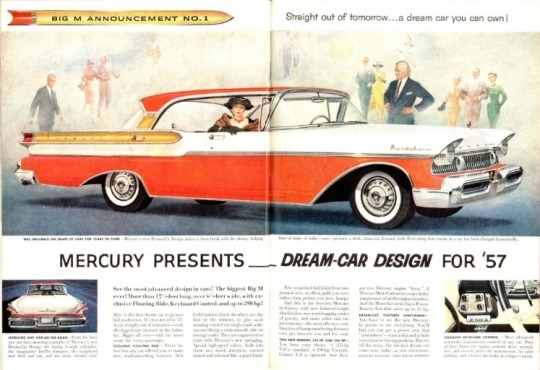
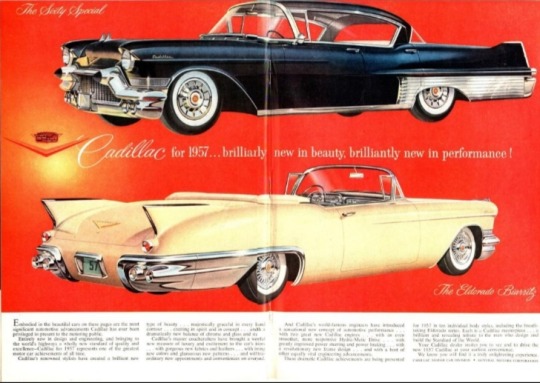




TIME, November 12, 1956
#vintage advertising#vintage advertisement#1950s#1956#1957 cars#car ads#cadillac#plymouth#mercury#buick#dodge
50 notes
·
View notes
Text
Pinterest Classic Car
1957 Mercury Montclair Convertible
#Prayer Focus: Pray for Our Prodigals
#Praise the Lord
Bruce’s Facebook https://www.facebook.com/bruce.dinsman
Please follow my blog Guam Christian Blog
Please follow my blog Guam Views Blog
Featured book: https://www.amazon.com/Daily-Service-4-Bruce-Dinsman-ebook/dp/B07W64BCD1
Twitter: @bad671
Instagram:…
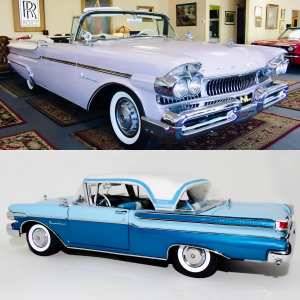
View On WordPress
0 notes
Text

LaRue Burbank, mathematician and computer, is just one of the many women who were instrumental to NASA missions.
4 Little Known Women Who Made Huge Contributions to NASA
Women have always played a significant role at NASA and its predecessor NACA, although for much of the agency’s history, they received neither the praise nor recognition that their contributions deserved. To celebrate Women’s History Month – and properly highlight some of the little-known women-led accomplishments of NASA’s early history – our archivists gathered the stories of four women whose work was critical to NASA’s success and paved the way for future generations.
LaRue Burbank: One of the Women Who Helped Land a Man on the Moon
LaRue Burbank was a trailblazing mathematician at NASA. Hired in 1954 at Langley Memorial Aeronautical Laboratory (now NASA’s Langley Research Center), she, like many other young women at NACA, the predecessor to NASA, had a bachelor's degree in mathematics. But unlike most, she also had a physics degree. For the next four years, she worked as a "human computer," conducting complex data analyses for engineers using calculators, slide rules, and other instruments. After NASA's founding, she continued this vital work for Project Mercury.
In 1962, she transferred to the newly established Manned Spacecraft Center (now NASA’s Johnson Space Center) in Houston, becoming one of the few female professionals and managers there. Her expertise in electronics engineering led her to develop critical display systems used by flight controllers in Mission Control to monitor spacecraft during missions. Her work on the Apollo missions was vital to achieving President Kennedy's goal of landing a man on the Moon.
Eilene Galloway: How NASA became… NASA
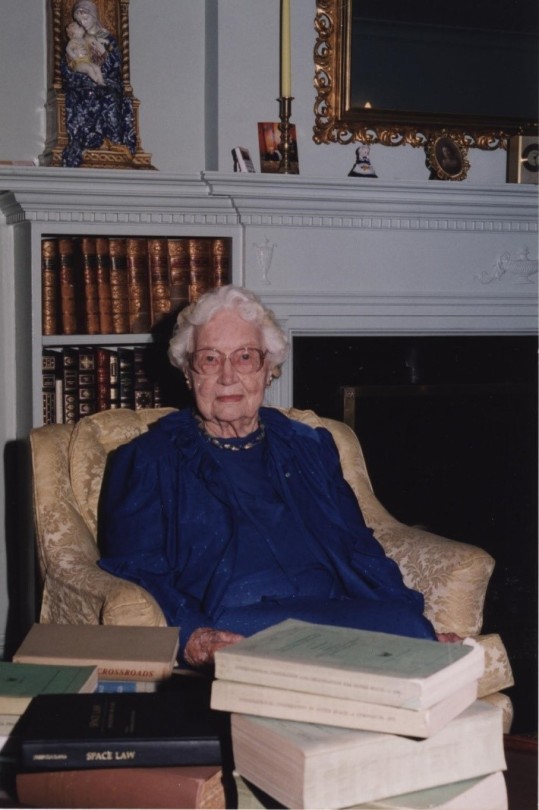
Eilene Galloway wasn't a NASA employee, but she played a huge role in its very creation. In 1957, after the Soviet Union launched Sputnik, Senator Richard Russell Jr. called on Galloway, an expert on the Atomic Energy Act, to write a report on the U.S. response to the space race. Initially, legislators aimed to essentially re-write the Atomic Energy Act to handle the U.S. space goals. However, Galloway argued that the existing military framework wouldn't suffice – a new agency was needed to oversee both military and civilian aspects of space exploration. This included not just defense, but also meteorology, communications, and international cooperation.
Her work on the National Aeronautics and Space Act ensured NASA had the power to accomplish all these goals, without limitations from the Department of Defense or restrictions on international agreements. Galloway is even to thank for the name "National Aeronautics and Space Administration", as initially NASA was to be called “National Aeronautics and Space Agency” which was deemed to not carry enough weight and status for the wide-ranging role that NASA was to fill.
Barbara Scott: The “Star Trek Nerd” Who Led Our Understanding of the Stars

A self-described "Star Trek nerd," Barbara Scott's passion for space wasn't steered toward engineering by her guidance counselor. But that didn't stop her! Fueled by her love of math and computer science, she landed at Goddard Spaceflight Center in 1977. One of the first women working on flight software, Barbara's coding skills became instrumental on missions like the International Ultraviolet Explorer (IUE) and the Thermal Canister Experiment on the Space Shuttle's STS-3. For the final decade of her impressive career, Scott managed the flight software for the iconic Hubble Space Telescope, a testament to her dedication to space exploration.
Dr. Claire Parkinson: An Early Pioneer in Climate Science Whose Work is Still Saving Lives

Dr. Claire Parkinson's love of math blossomed into a passion for climate science. Inspired by the Moon landing, and the fight for civil rights, she pursued a graduate degree in climatology. In 1978, her talents landed her at Goddard, where she continued her research on sea ice modeling. But Parkinson's impact goes beyond theory. She began analyzing satellite data, leading to a groundbreaking discovery: a decline in Arctic sea ice coverage between 1973 and 1987. This critical finding caught the attention of Senator Al Gore, highlighting the urgency of climate change.
Parkinson's leadership extended beyond research. As Project Scientist for the Aqua satellite, she championed making its data freely available. This real-time information has benefitted countless projects, from wildfire management to weather forecasting, even aiding in monitoring the COVID-19 pandemic. Parkinson's dedication to understanding sea ice patterns and the impact of climate change continues to be a valuable resource for our planet.
Make sure to follow us on Tumblr for your regular dose of space!
#NASA#space#tech#technology#womens history month#women in STEM#math#climate science#computer science
2K notes
·
View notes
Text
Pluto generations
Aries (1823 - 1851)
The presence of Pluto in Aries defines a generation marked by a pioneering and assertive spirit, reflecting a profound longing for independence. Those influenced by this placement often take on key roles in instigating social change and revolutionizing established systems. Historical events from 1823 to 1852, such as the Wars for Latin American Independence, the First Opium War, and the Women's Rights Convention, exemplify the transformative impact of this astrological configuration.
Taurus (1852 - 1881)
Pluto's position in Taurus defines a generation characterized by unwavering perseverance, determination, and a profound connection to the material realm. These individuals prioritize stability, security, and the sustainable use of resources, leaving a lasting imprint on economic systems and environmental consciousness. Notably, during Pluto's transit in Taurus, the Industrial Revolution surged forward, marked by the rise of corporate structures in industries like railroads and steam engines.
Gemini (1882 – 1913)
The generation under the influence of Pluto in Gemini witnessed the dawn of the Second Industrial Revolution, aptly named the Technological Revolution. These individuals, marked by intellectual curiosity and adaptability, excelled in communication and media, significantly shaping cultural and technological progress. The era marked the birth of influential figures like John Maynard Keynes and Benito Mussolini, along with German scientist Robert Koch's identification of the tuberculosis bacterium. Notably, the First World War occurred during this period, bringing significant changes in all areas of life.
Cancer (1914 -1938)
Pluto in Cancer signifies a generation characterized by deep emotional sensitivity, nurturing instincts, and strong family values. Living through World War I, the Spanish flu pandemic, and the Great Depression, they grew up in a challenging era that shaped their conservative outlook. This generation, often referred to as the "Greatest Generation," prioritized family, spirituality, and adherence to societal norms. While their emphasis on politeness and chivalry had positive aspects, it also gave rise to dark elements such as sexist gender roles, racial segregation, and cultural supremacy.
Leo (1939 – 1958)
Pluto in Leo defines a generation marked by a quest for self-expression, creativity, and a hunger for recognition. Born during historical events like the Nazi invasion of Poland and the Battle of Stalingrad, these individuals challenged authority, imprinting their influence on art, entertainment, and leadership styles. Ruled by the Sun, Pluto in Leo symbolizes a fresh start after periods of war and chaos, fostering a sense of self-value and confidence. This prideful, generous, and naturally leadership-oriented generation, however, tends to resist change and stands firm in their philosophies as a fixed sign.
Virgo (1957 – 1971)
Pluto in Virgo defines a generation marked by a robust work ethic, practicality, and an innate drive for perfection. Born during pivotal events such as the first documented AIDS cases and Martin Luther King Jr.'s iconic "I Have a Dream" speech, these individuals contribute to societal shifts in health, wellness, and environmental consciousness. Ruled by Mercury, Pluto in Virgo emphasizes efficiency and hard work, fostering reliability, trustworthiness, and empathy. This generation focuses on rebuilding and technology, epitomizing an era of research and preparation, notably during the Cold War.
Libra (1972 – 1983)
Pluto in Libra defines a generation marked by a profound yearning for harmony, justice, and equality. With Venusian qualities, these individuals are inherently social, compassionate, and value connections with others. The events during their time, such as the end of the Vietnam War, the introduction of VHS, and the rise of personal computers, align with their commitment to justice and duty for the collective. This generation, while not necessarily seeking radical societal reshaping, is more focused on preserving law and order, offering assistance to those in need, and rectifying wrongs through the pursuit of justice.
Scorpio (1984 – 1995)
Pluto in Scorpio defines a generation marked by intensity, depth, and profound transformation, playing a pivotal role in societal shifts related to power dynamics, sexuality, and psychological exploration. While the preceding Pluto in Libra generation advocated for balance, Pluto in Scorpio pushed the limits, ushering in events like the Gulf War, the end of the Cold War, and the advent of the World Wide Web. Resilient and empowered, they navigated constant transformations, developing a keen ability to adapt and thrive through each metamorphosis. This generation also contributed to a shifting cultural perspective on sexuality.
Sagittarius (1996 – 2008)
Pluto in Sagittarius shapes a generation marked by a thirst for knowledge, cultural exchange, and a global perspective, contributing significantly to societal shifts in education, philosophy, and belief systems. This generation, embodies the archer's bravery and fearlessness, fostering a spirit of rebellion and outspokenness. Sagittarius' affinity for networking and socializing with individuals from various nations aligns with the rise of the internet, a tool that facilitates global connectivity. Key events during this period include the successful cloning of Dolly the sheep, the introduction of the Euro to financial markets, and the groundbreaking launch of the iPhone in 2007.
Capricorn (2008 – 2023)
Pluto in Capricorn defines a generation marked by ambition, pragmatism, and a distinct focus on challenging traditional structures, leading to transformative changes in politics, business, and governance. Ruled by Saturn, this era, encompassing events such as the launch of Bitcoin, the Syrian civil war, Edward Snowden's revelations on mass surveillance, and the COVID-19 pandemic, unfolded amidst the Great Recession and the rise of social media. The influence of Saturn instils a commitment to rules, regulations, and social changes that align with a desire for structure and order.
Aquarius (2024 – 2044)
Pluto in Aquarius heralds a generation marked by innovation, individuality, and an impassioned pursuit of freedom and social progress. The current era unfolds amid a new global order, carrying both anticipation and uncertainty. Emerging from the constraining Capricorn era, Aquarius brings a promise of hope, healing, and a future-focused mindset.
Pisces (2044 – 2067)
Pluto in Pisces gives rise to a generation marked by empathy, spirituality, and a deepening of the collective consciousness, contributing to societal shifts in compassion, art, and transcendence. As one era concludes and another begins, this period signals the resurgence of spirituality, with people connecting profoundly to the universe through meditation and prayer. Anticipated as a peaceful time with minimal conflict, technological progress may temporarily slow after the Aquarius era's boom. This wise generation is poised to challenge traditional norms, potentially leading to the disappearance of gender roles, marking a significant chapter in human evolution.
#astro observations#astro community#astro placements#all signs#astrology#astro notes#astrologer#for you#zodiac placements#pluto#planets#predictive astrology#astrology notes
702 notes
·
View notes
Photo
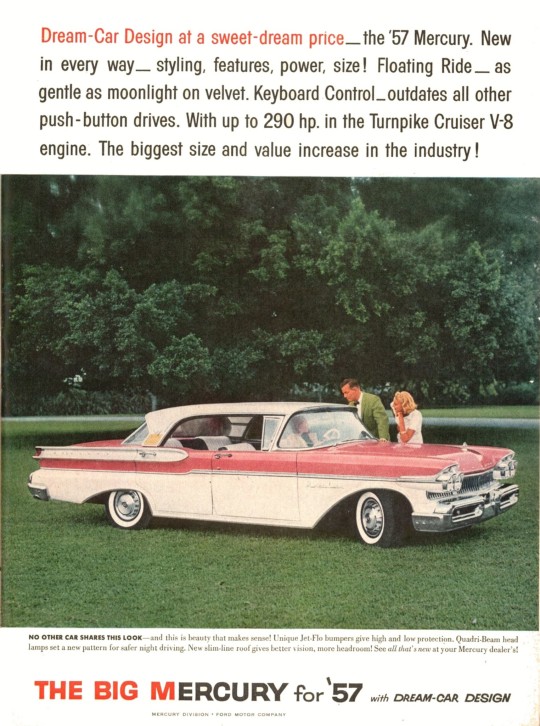
1957 Mercury. Dream-Car Design at a sweet-dream price
Source: Time Magazine
Published at: https://propadv.com/automobiles-ad-and-poster-collection/mercury-ad-and-poster-collection/
1 note
·
View note
Text





Mercury XM-Turnpike Cruiser Concept, 1956. A a luxury coupe show car with twin transparent roof panels that flipped up when the doors were opened. Inspired of the Interstate Highway System, the Turnpike Cruiser Concept was designed with fast, long distance driving in mind. The series production Turnpike Cruiser of 1957 toned down all of the concepts styling features
#Mercury#Mercury XM-Turnpike Cruiser Concept#Mercury XM-Turnpike Cruiser#1956#concept#design study#prototype#show car#dead brands#1950s#1950s style
333 notes
·
View notes
Text
Hawk/Tim Playlist
I have spent the past week perfecting my Fellow Travelers playlist and I wanted to share it, but my spotify is private, so here's the list of songs. I've categorised everything based on either episode or time period so that the whole thing is in chronological order to match the plot
1952/Episode 1
Cool - Troye Sivan
One of Your Girls - Troye Sivan
You Turned the Tables on Me (Anita O'Day version)
It's My Party - Lesley Gore
1952/Episode 2
Mad About the Boy (Adam Lambert version)
Bulletproof - La Roux
Bedroom Hymns - Florence + The Machine
1952/Episode 3
Lurk - The Neighbourhood
Perhaps, Perhaps, Perhaps - Doris Day
I Wanna Be Your Slave - Måneskin
1952/Episode 4
Last Christmas - Wham!
How I Survived Bobby Mackey's Personal Hell - Lincoln
Carry On - Fun.
1953/Episode 5
Rock Hudson - Kelly Clarkson
Worst of You - Maisie Peters
What a Heavenly Way to Die - Troye Sivan
Fun - Troye Sivan
Postcard - Troye Sivan (this is actually in reference to episode 8)
1957/Episode 8
Hot and Heavy - Lucy Dacus
Last Dance - James Blunt
1968/Episode 6
How I'm Feeling Now - Lewis Capaldi
It's Been a Long, Long Time - Harry James & His Orchestra
Love in the Time of Socialism - Yellow House
Mystery of Love - Sufjan Stevens
1979/Episode 7
Losing My Religion - REM
Somebody to Love (Troye Sivan Version)
Just Can't Get Enough - Depeche Mode
Time After Time - Lauv
Him & I - G Eazy
1980s (before episode 8)
The Great Pretender - Freddie Mercury
Cosmic Love - Florence + The Machine
Futile Devices - Sufjan Stevens
1986/Episode 8
Head Over Heals - Tears for Fears
Stop Making This Hurt- Bleachers
Visions of Gideon - Sufjan Stevens
also, it's called 'a tall glass of milk' on my Spotify, which I think is iconic
73 notes
·
View notes
Text
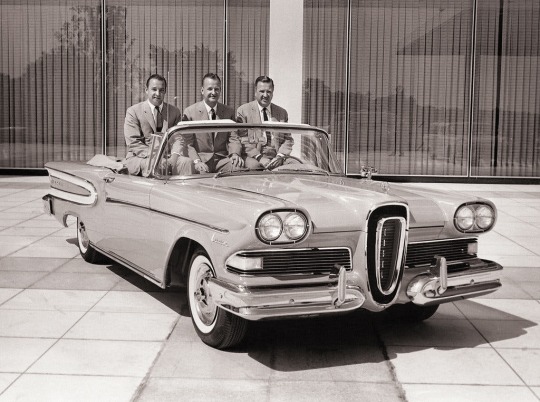
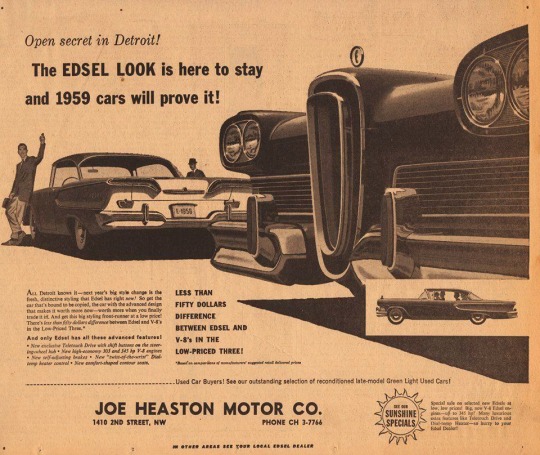
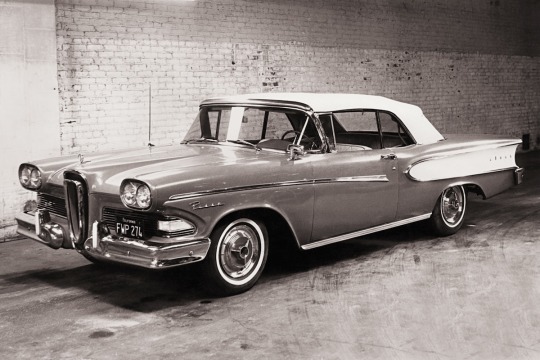


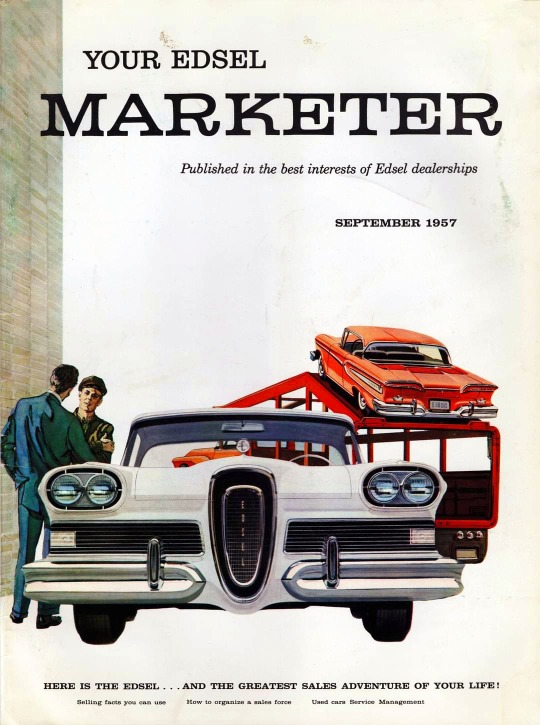
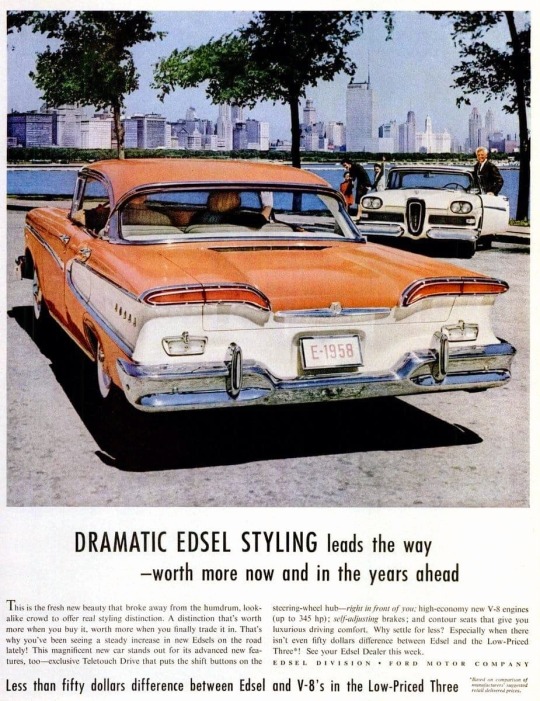
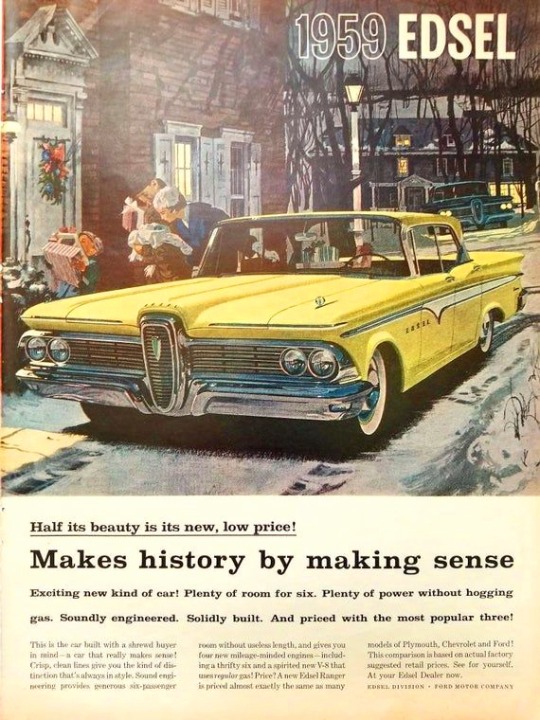
🇺🇲 Explore the intriguing history of the Ford Edsel—a car that captivated the automotive world with its bold design and innovative features! Introduced in 1956, the Edsel was envisioned as a revolutionary addition to the American automobile market.
🎩 Edsel was a division and brand of automobiles that was produced by the Ford Motor Company. Named after Edsel Ford, the son of company founder Henry Ford, the Edsel was intended to fill the gap between Ford and Mercury, offering consumers a new level of luxury and sophistication. With its distinctive styling and advanced engineering, the Edsel was poised to make a splash in the competitive automotive landscape.
🚘 Despite high expectations and extensive marketing campaigns, the Ford Edsel faced numerous challenges upon its release. Its unconventional design, characterized by a unique grille and distinctive "horse collar" front bumper, divided opinion among consumers and critics alike.
⚙️ Under the hood, the Edsel boasted a range of powerful engines and innovative technologies, including the "Teletouch" automatic transmission and "E-475" V8 engine. However, production delays and quality control issues tarnished its reputation in the eyes of consumers, leading to disappointing sales figures.
💔 The launch of the Ford Edsel on "E-Day" in September 1957 remains one of the most highly anticipated events in automotive history. Despite the initial hype, the Edsel failed to resonate with buyers, leading to its discontinuation in 1960 after just three model years.
🌟 Although the Ford Edsel may not have achieved commercial success, it remains a fascinating chapter in the annals of automotive history, showcasing the risks and challenges inherent in innovation and design.
#brits and yanks on wheels#retro cars#transatlantic torque#vehicle#cars#old cars#brands#companies#automobile#american cars#ford#edsel ford#edsel#ford motor company#michigan#made in usa#usa#made in america#american auto#old car#cool cars#classic cars#muscle car#car#v8#disivion#automotive#1950s cars#1950s#history
42 notes
·
View notes
Text

Found slide: A glimpse behind the façade of the offices of The Age newspaper and The Leader magazine, Naarm Melbourne, shortly before demolition began for the new building, circa 1957. Photograph by a member of the Radford family. The figure of Mercury on top of the pediment was sculpted by C Douglas Richardson around 1899 and, after several location changes, was donated by The Age to the Melbourne Museum
#found slide#naarm#melbourne#kulin nation#victoria#australia#kodachrome#radford family of brighton#1957
26 notes
·
View notes
Photo

Mercury Montclair Convertible 1957. - source 40 & 50 American Cars.
86 notes
·
View notes

